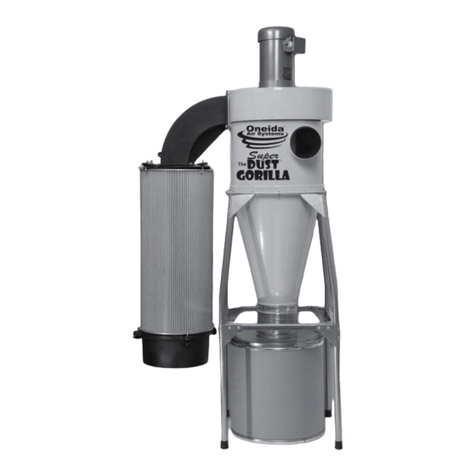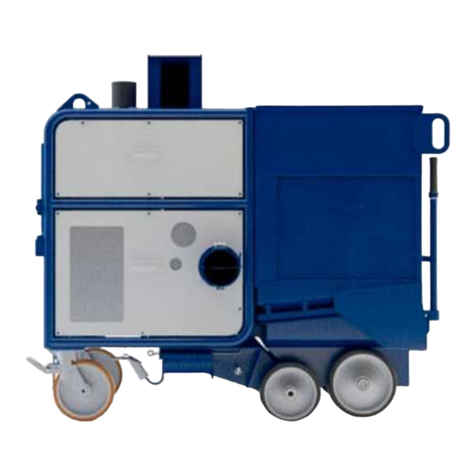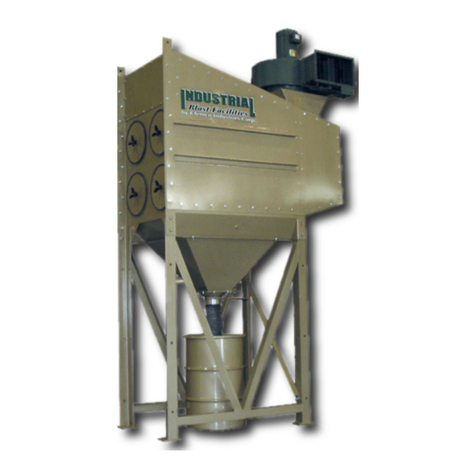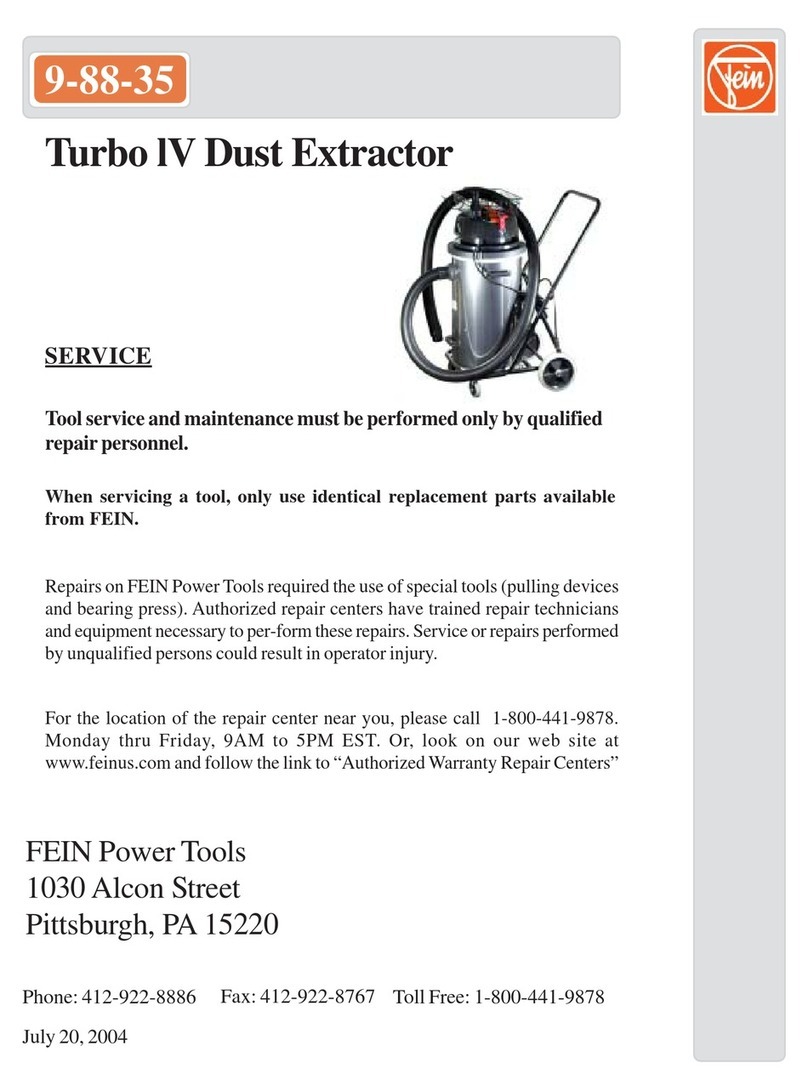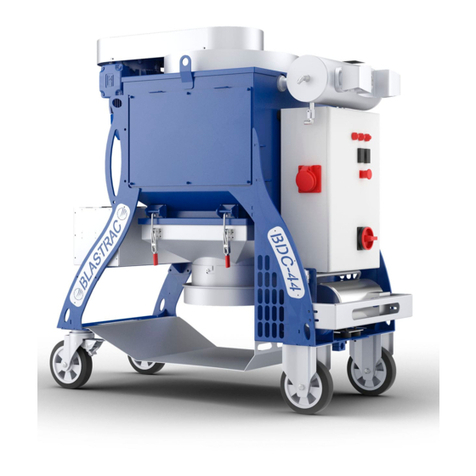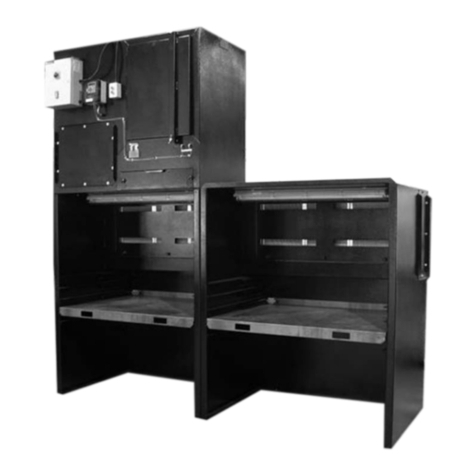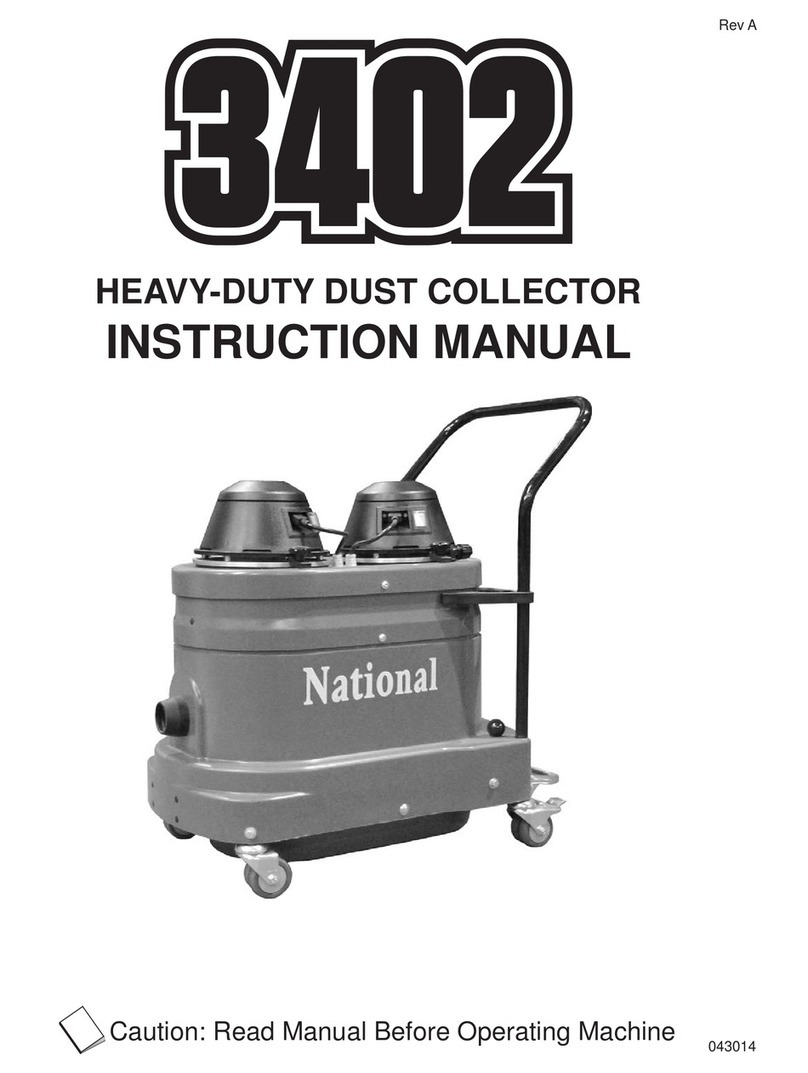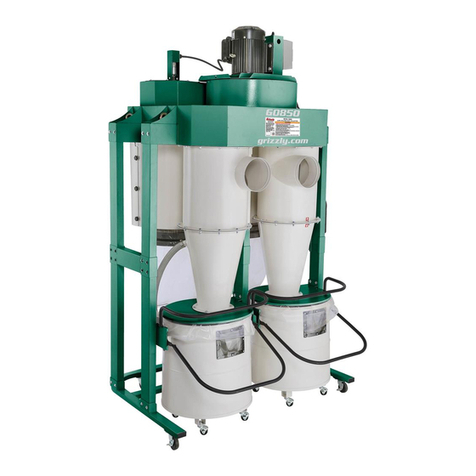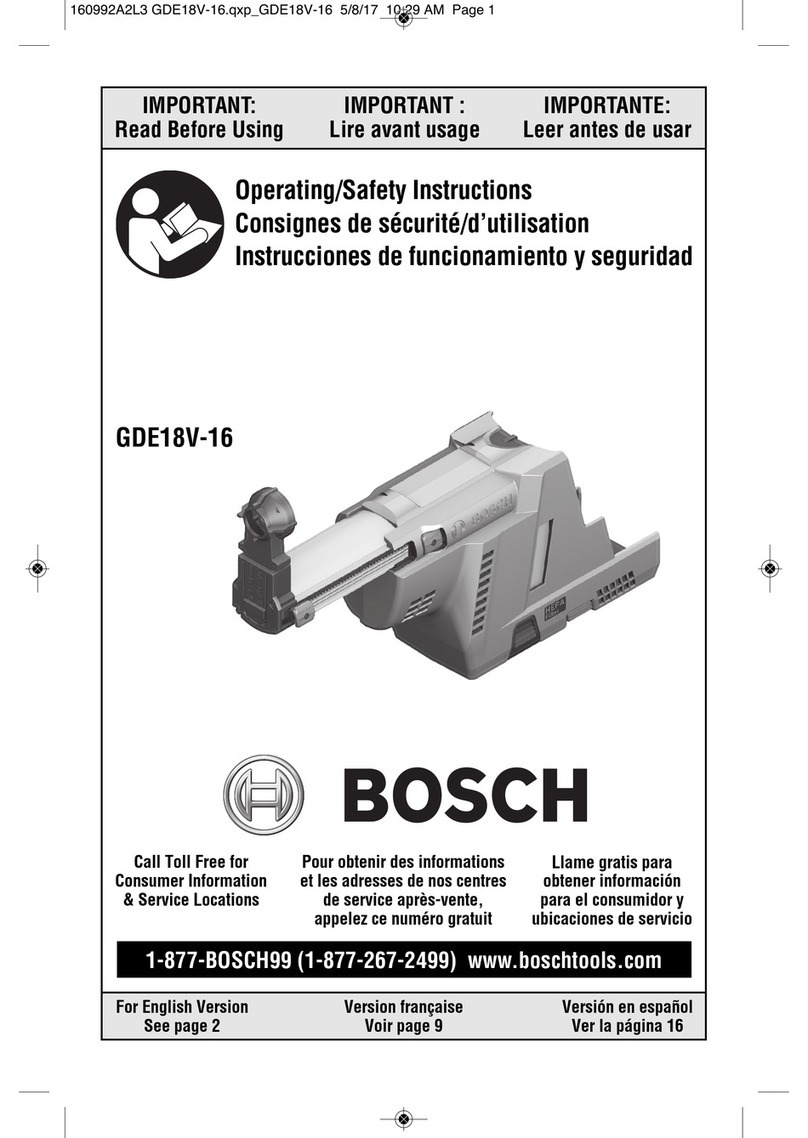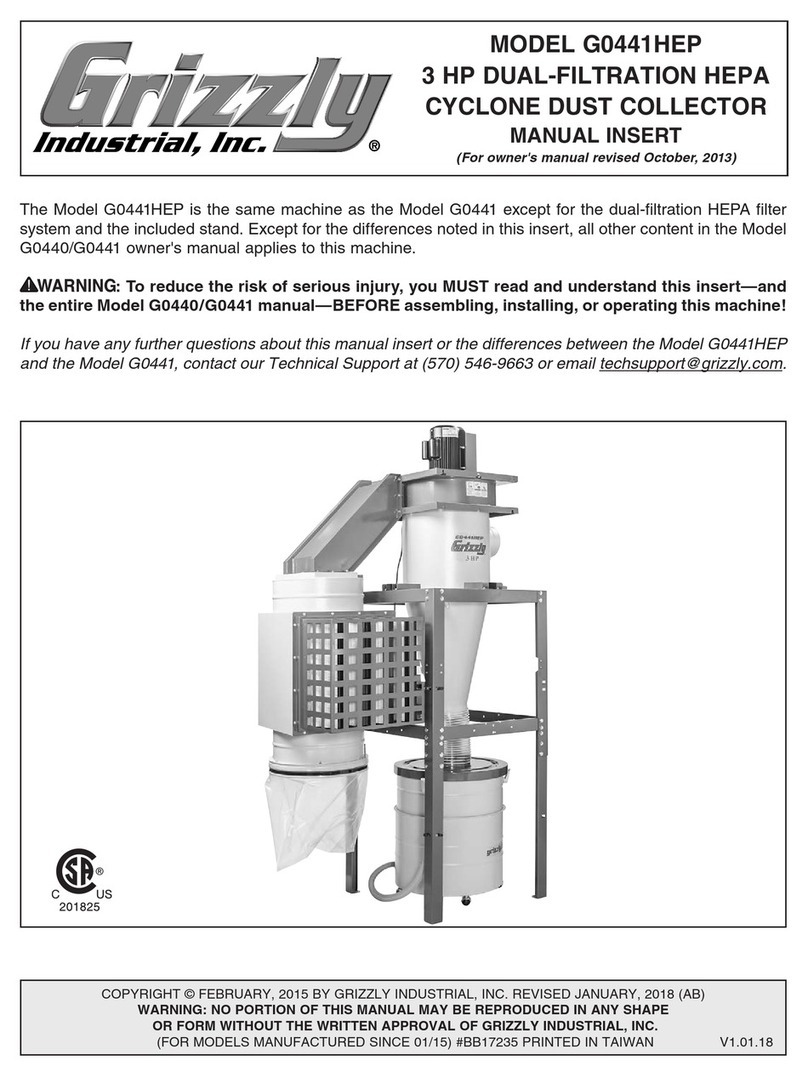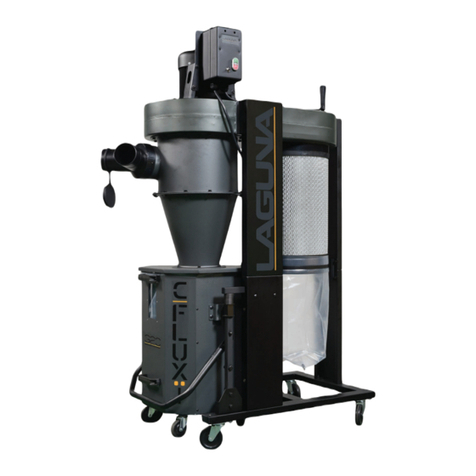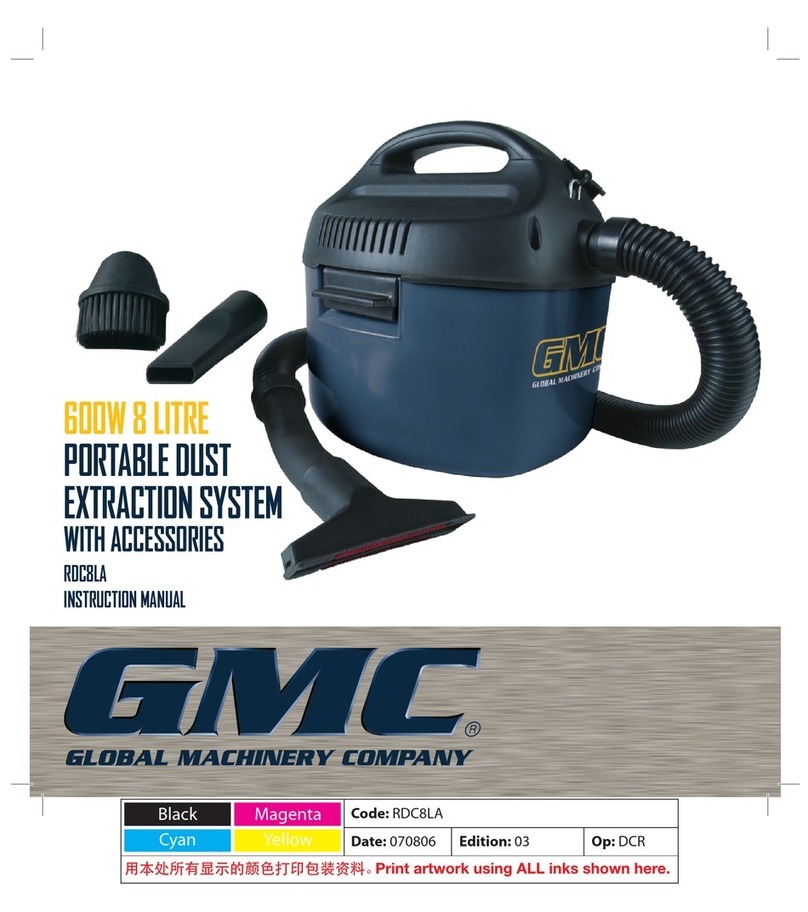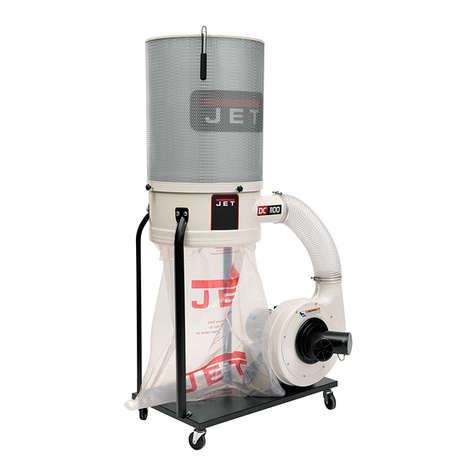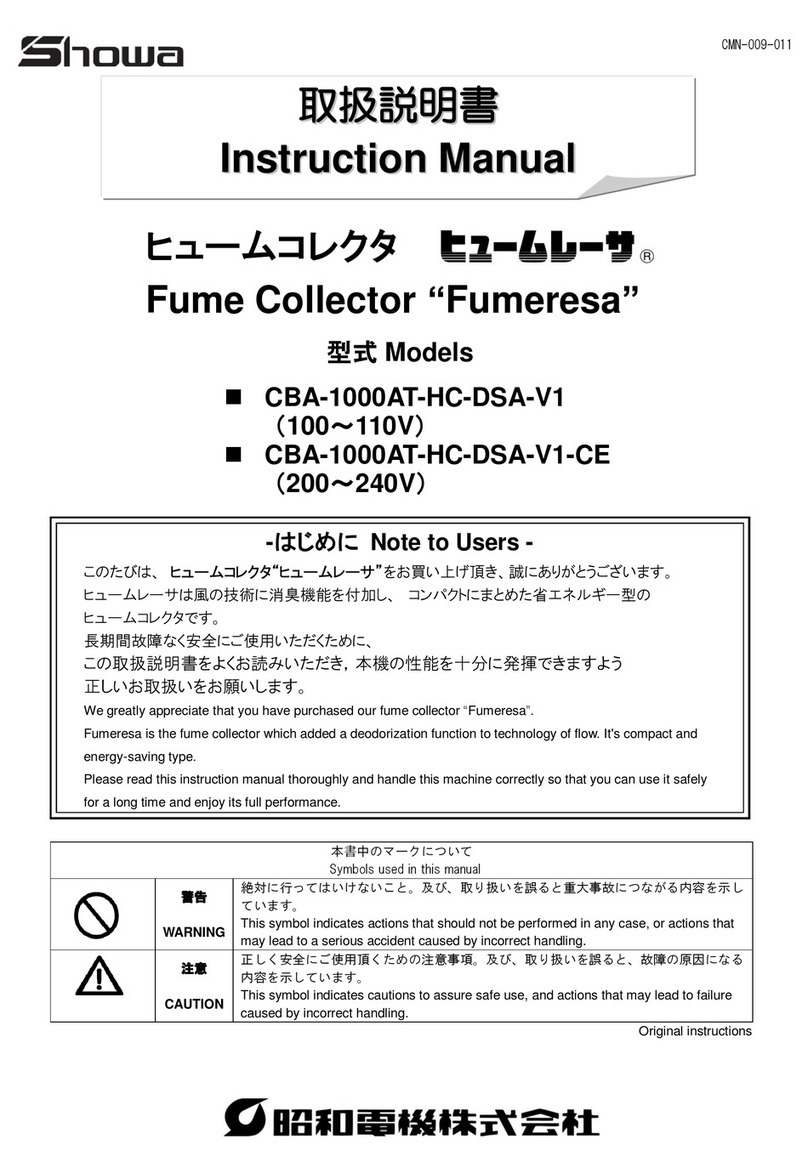
RPH DUST COLLECTOR Page 1
1.3 Table of Contents
1.0 INTRODUCTION
1.1 Scope: This manual covers the assembly,
installation, operation and maintenance of RPH Reverse
Pulse Jet Dust Collectors. Some equipment may vary
slightly due to size and configuration. Drawings supplied
with this manual apply to the specific dust collector
provided. Use the drawings along with the manual, to aid in
the assembly of the collector and for ordering replacement
parts. The dust collector is one part of a larger system. This
manual is to be used in conjunction with all other manuals
provided with the equipment.
Introduction................................................................... 1.0
Assembly and Installation............................................ 2.0
Operation...................................................................... 3.0
Adjustments ................................................................. 4.0
Preventive Maintenance .............................................. 5.0
Service Maintenance ................................................... 6.0
Troubleshooting ........................................................... 7.0
Replacement Parts ...................................................... 8.0
1.4 Theory of Operation
1.4.1 The exhauster draws dust-laden air through the
ducting from the ventilated area, and through the filter
cartridges. As the air passes through the cartridges,
dust accumulates on the outer surface. Cleaned air
flows through the center of the cartridges, through the
exhaust ducting, and out the exhauster. The
accumulated dust is periodically released from the
cartridges by a pulse of compressed air. A typical
general arrangement with call-outs used in the manual
are shown in Figure 1.
1.2 Hazard Alerts
1.2.1 Clemco Industries Corp. uses signal words, based
on ANSI Z535.2-1991, to alert the user of a potentially
hazardous situations that may be encountered while
operating this equipment. ANSI's definitions of the signal
words are as follows:
This is the safety alert symbol. It is used
to alert the user of this equipment of
potential personal injury hazards.
Obey all safety messages that follow this symbol to
avoid possible injury or death.
1.4.2 RPH Dust Collectors utilize reverse pulse jet
cartridge filters. Compressed air used for the pulse is
released from the pulse manifold by quick-release
diaphragm pulse valves. At regular timed intervals the
sequence timer sends a signal to one of the solenoid
valves, releasing a pulse of air, which in turn opens the
respective diaphragm valve. The momentary opening of
the valve releases a burst of compressed air from the
manifold to the clean air side of the filter cartridges,
thus reversing the air flow to remove accumulated dust.
CAUTION
Caution used without the safety alert symbol
indicates a potentially hazardous situation
which, if not avoided, may result in property
damage.
1.4.3 Each solenoid and diaphragm valve is opened
in sequence until all cartridges have been cleaned
once, and then the cycle is repeated. If the switch on
the sequence panel is kept in the "on" position, the
sequence control panel energizes when the exhauster
is turned on, and stops when the exhauster is turned
off.
CAUTION
Caution indicates a potentially hazardous
situation which, if not avoided, may result in
minor or moderate injury.
1.4.4 The timers that control the "on" and "off" time of
the air pulse are located in the sequence control panel.
The "on" time should never be adjusted. The "off" time
controls the length of time between each pulse. The
shorter the "off" time, the more frequent the pulse
cycles. See Section 4.2.
WARNING
Warning indicates a potentially hazardous
situation which, if not avoided, could result in
death or serious injury.
1.4.5 The differential pressure gauge shows the
pressure difference between the dirty and clean side of
the filters. The gauge helps determine the proper
setting for the timer "off" time.
DANGER
Danger indicates an imminently hazardous
situation which, if not avoided, will result in
death or serious injury.


